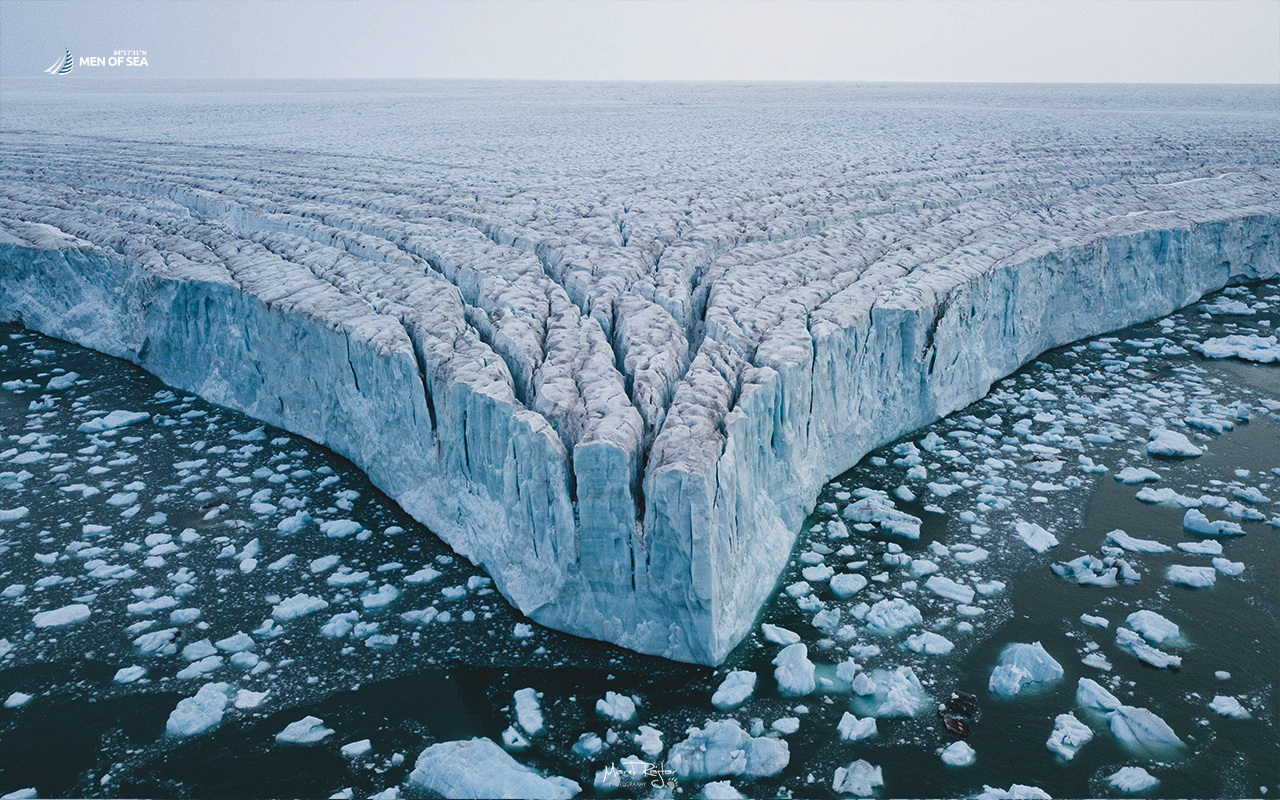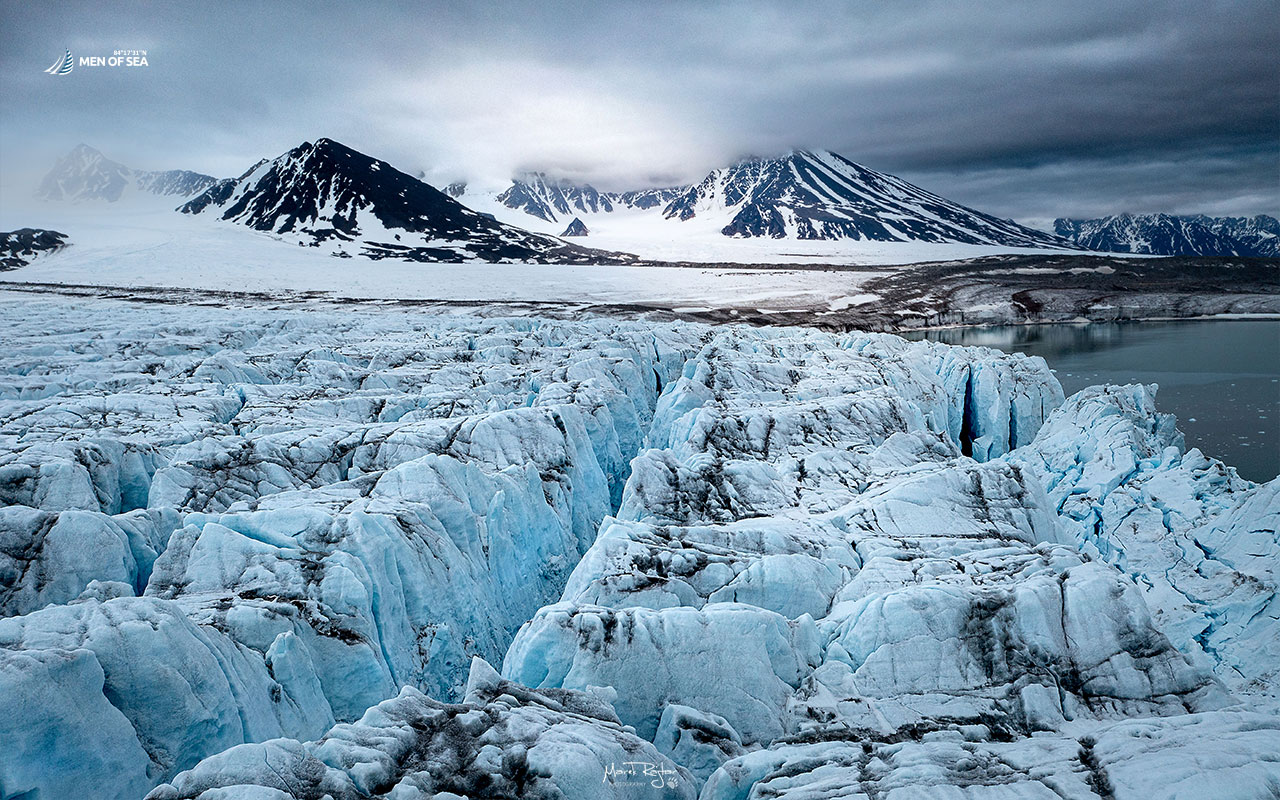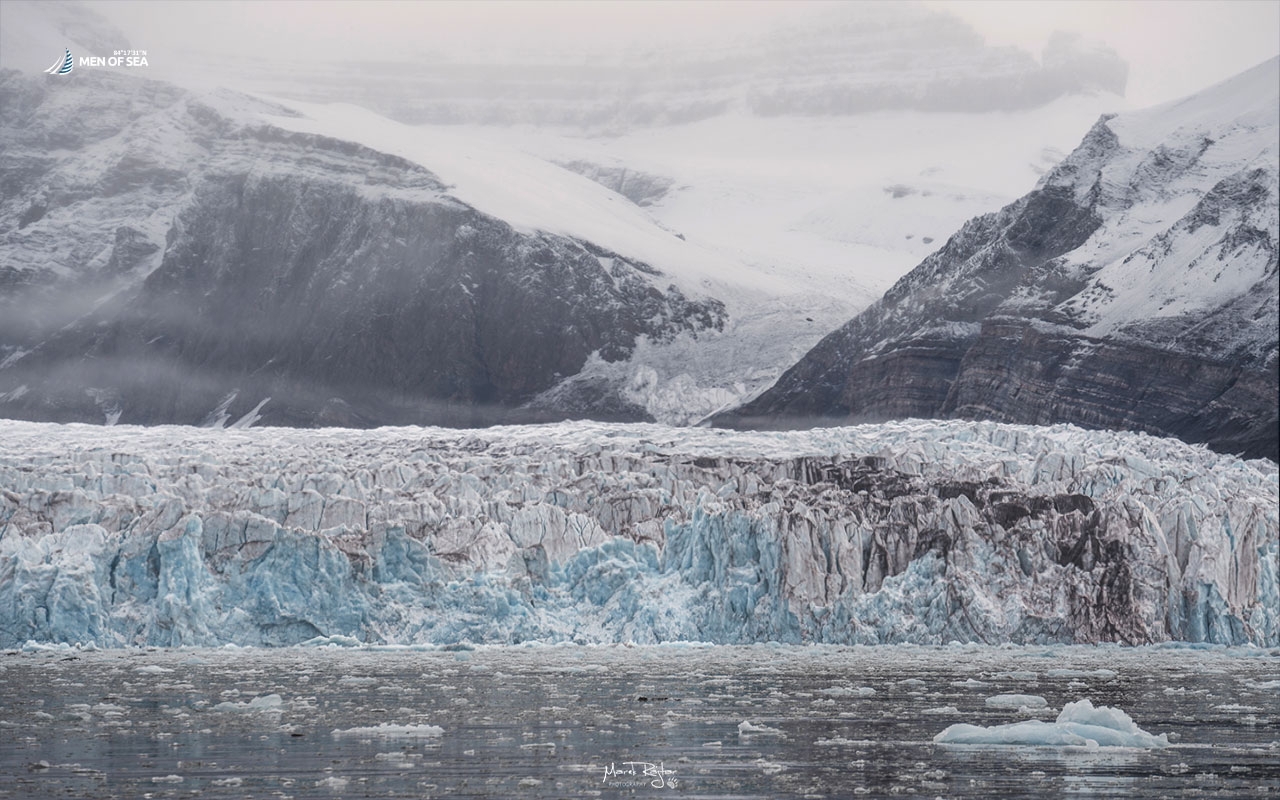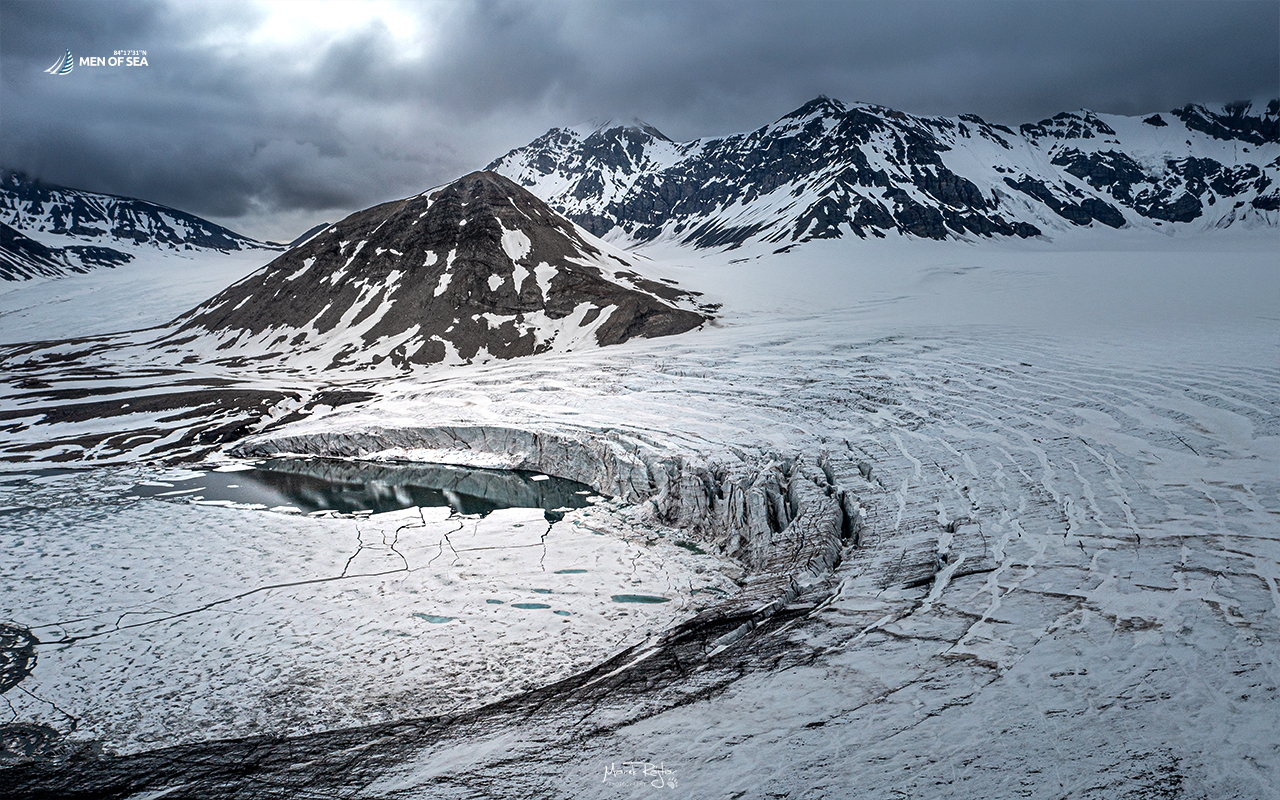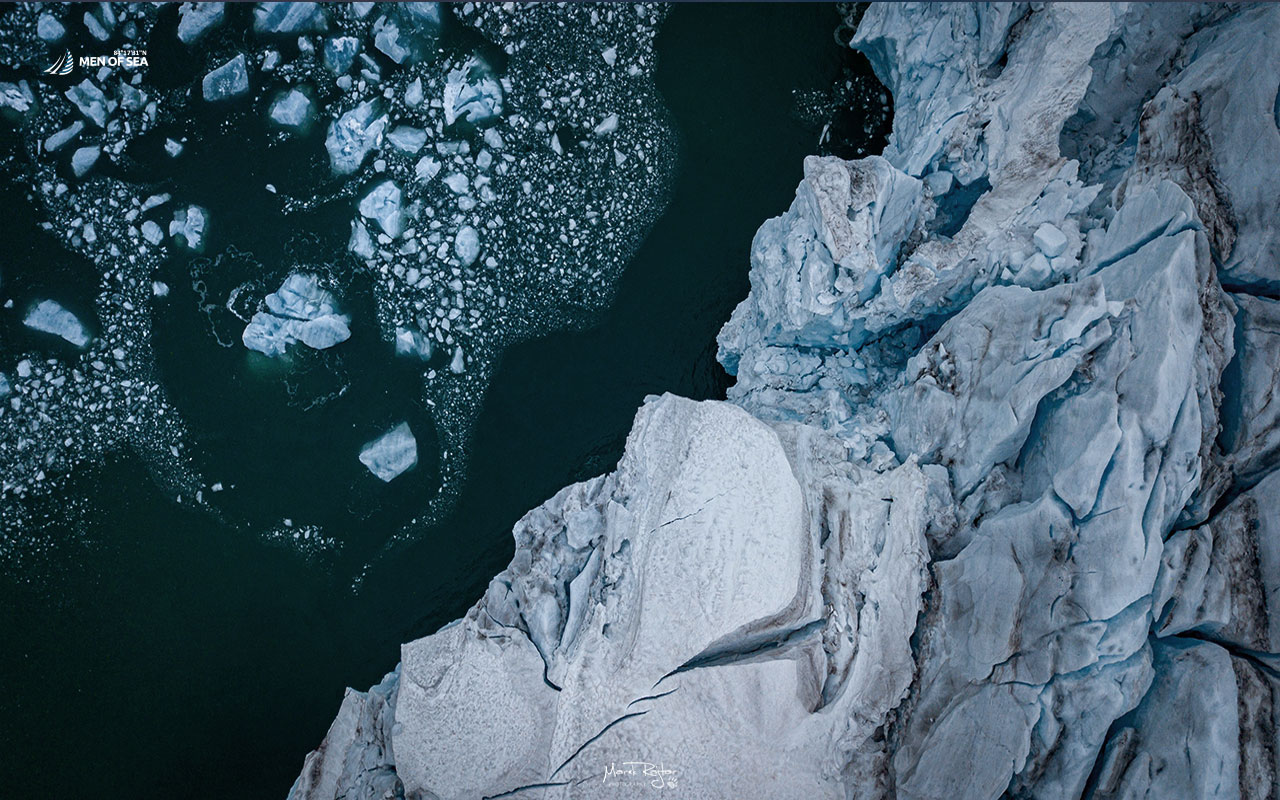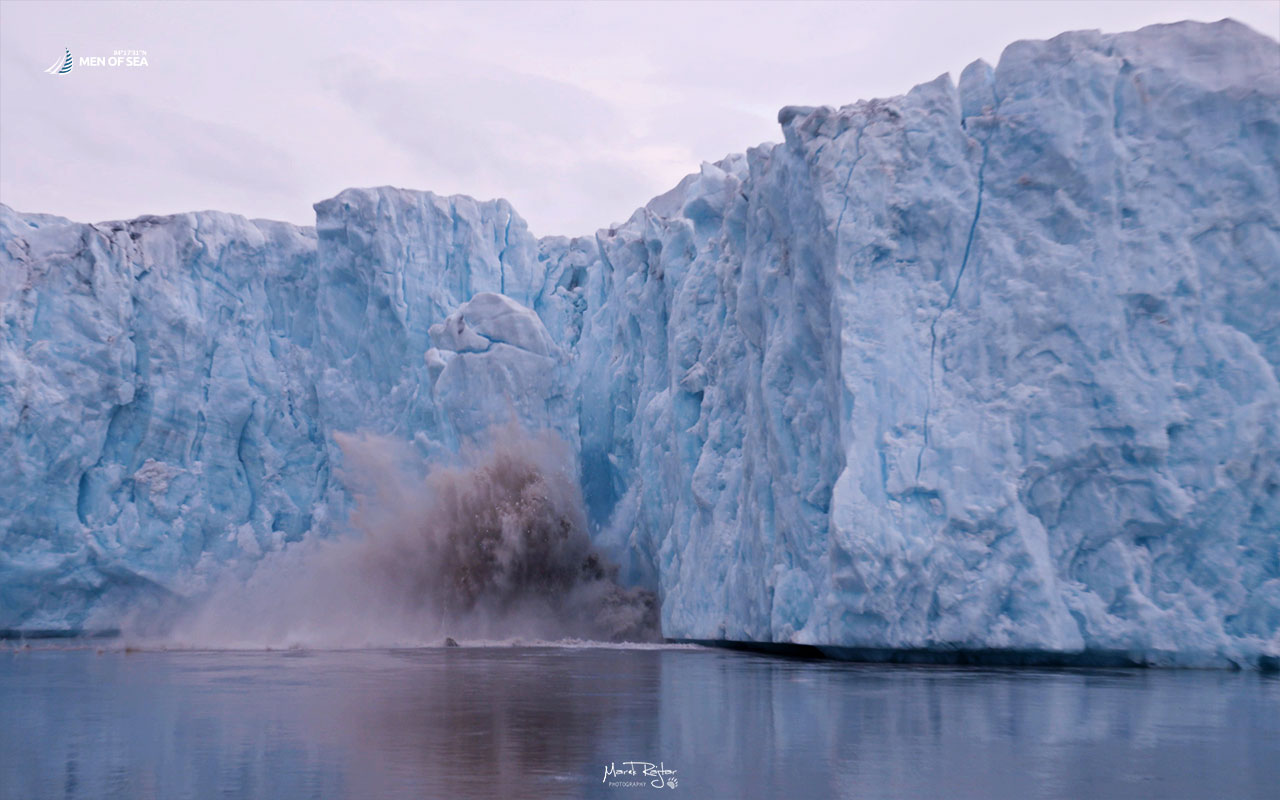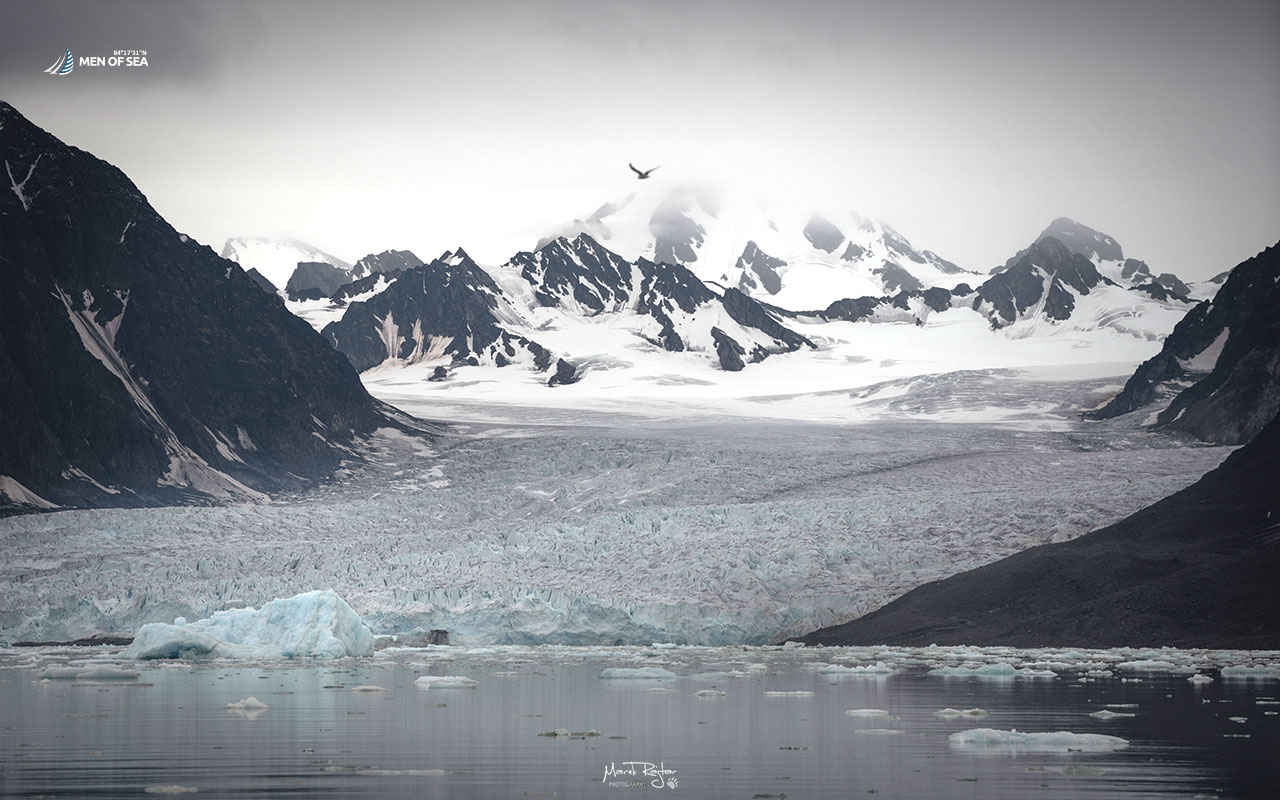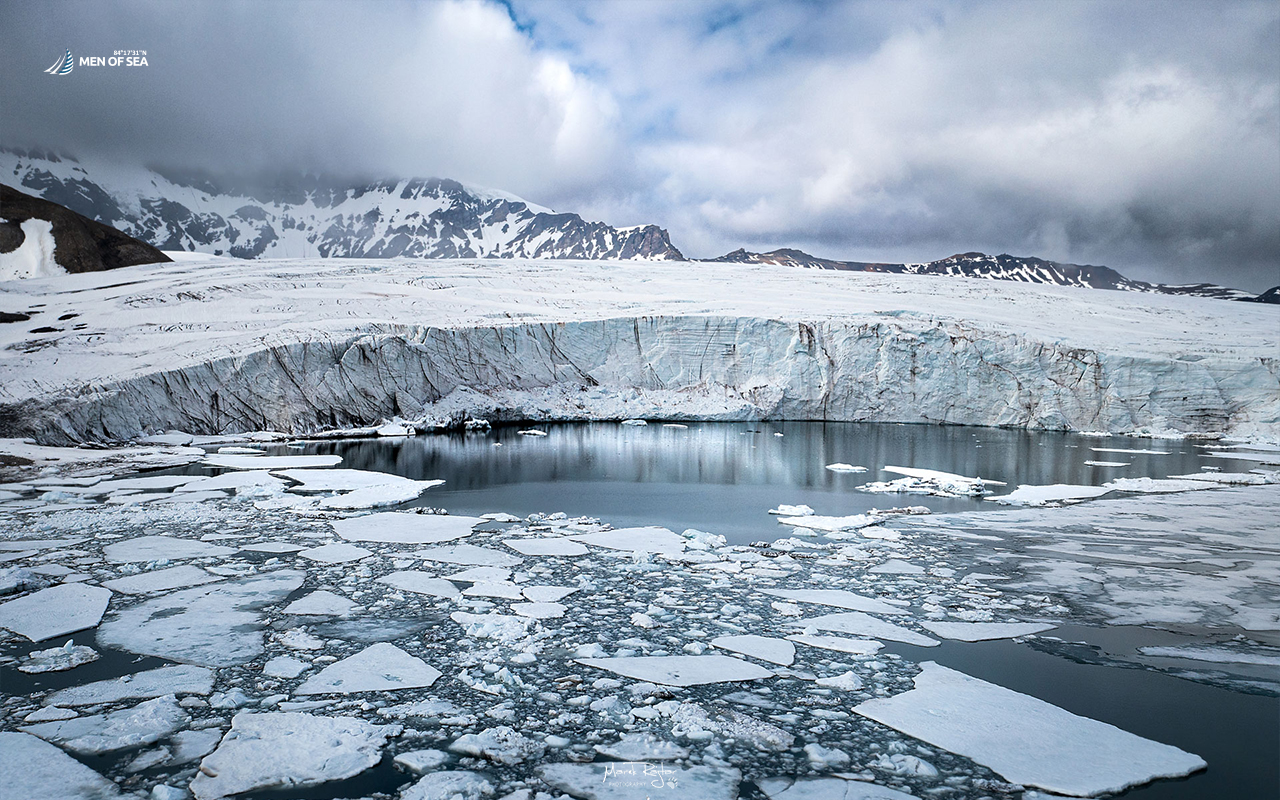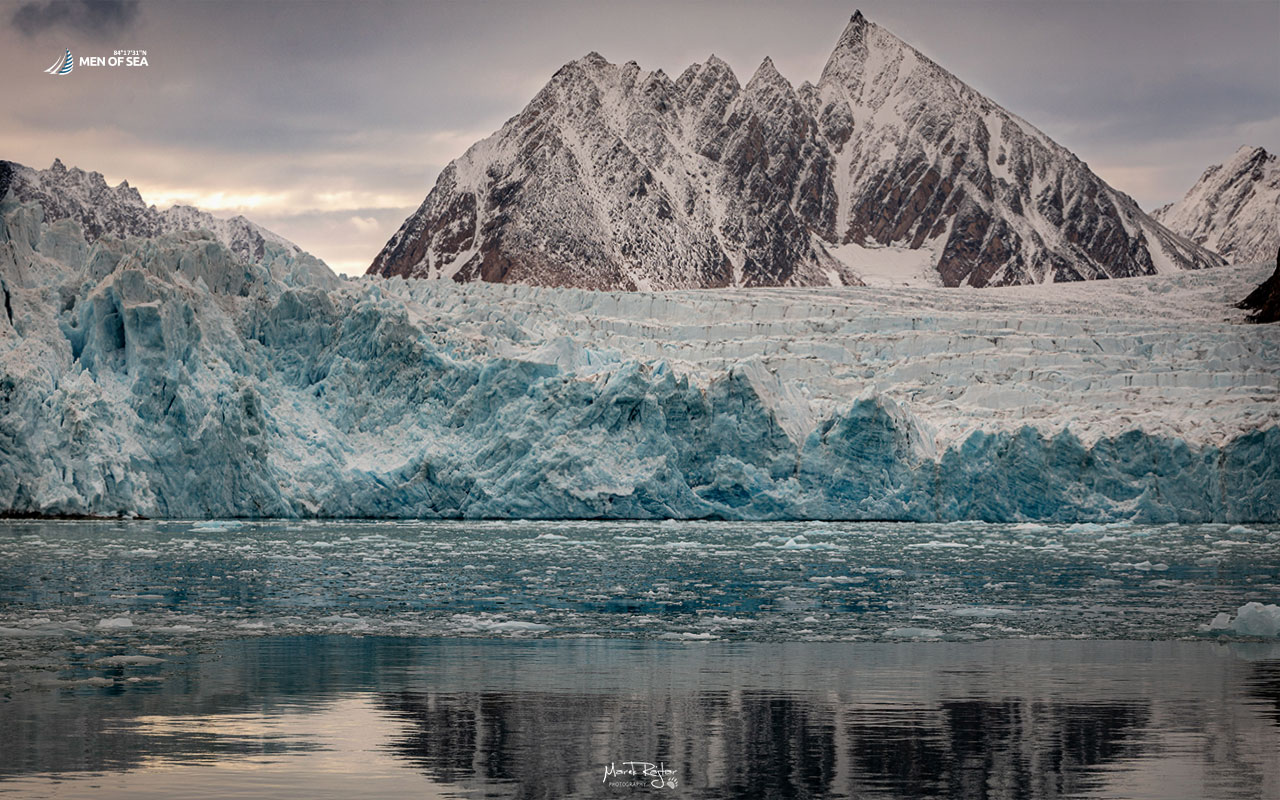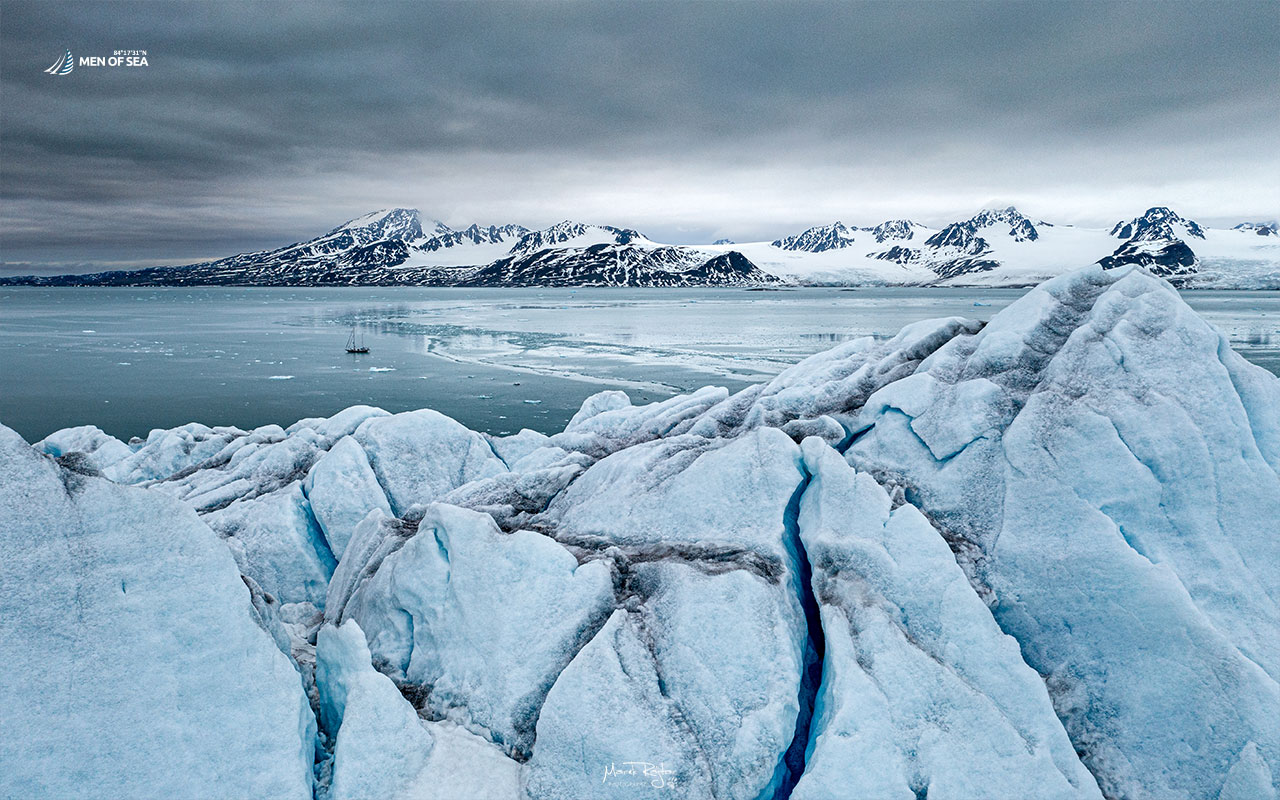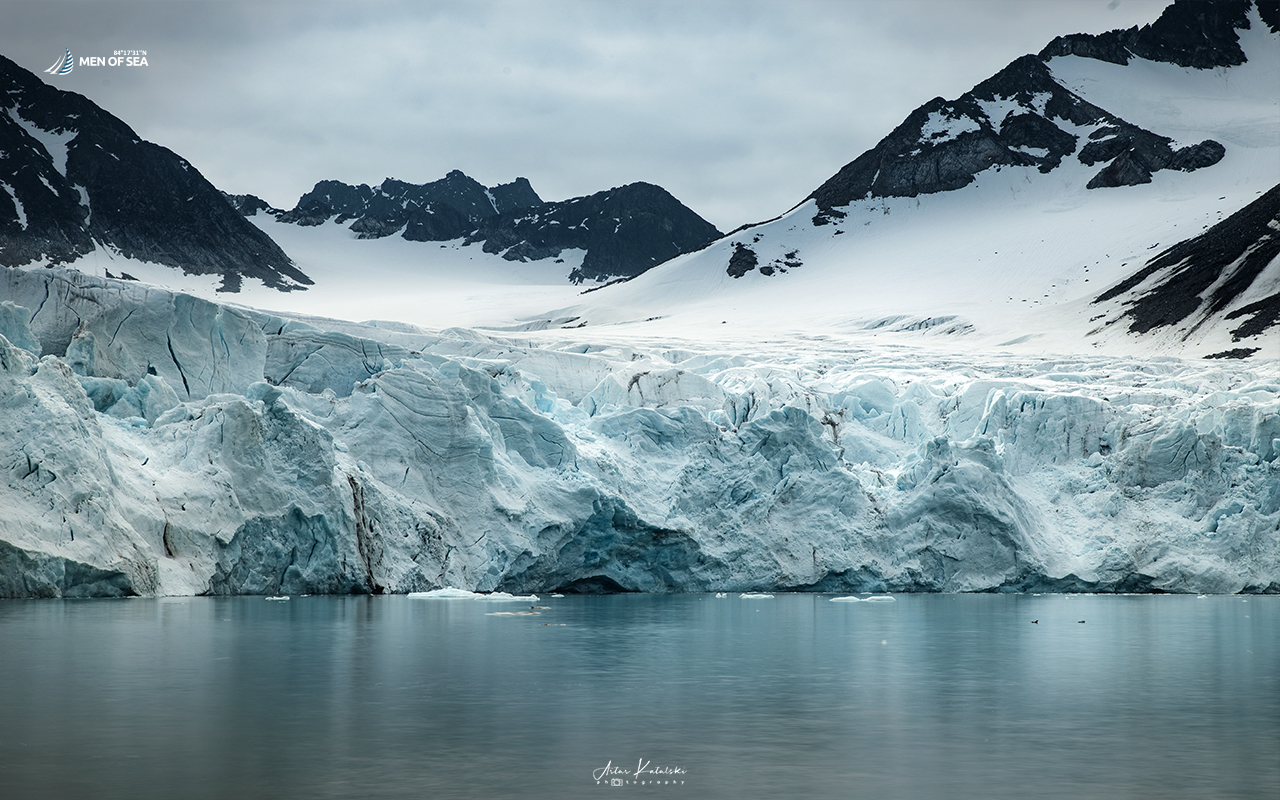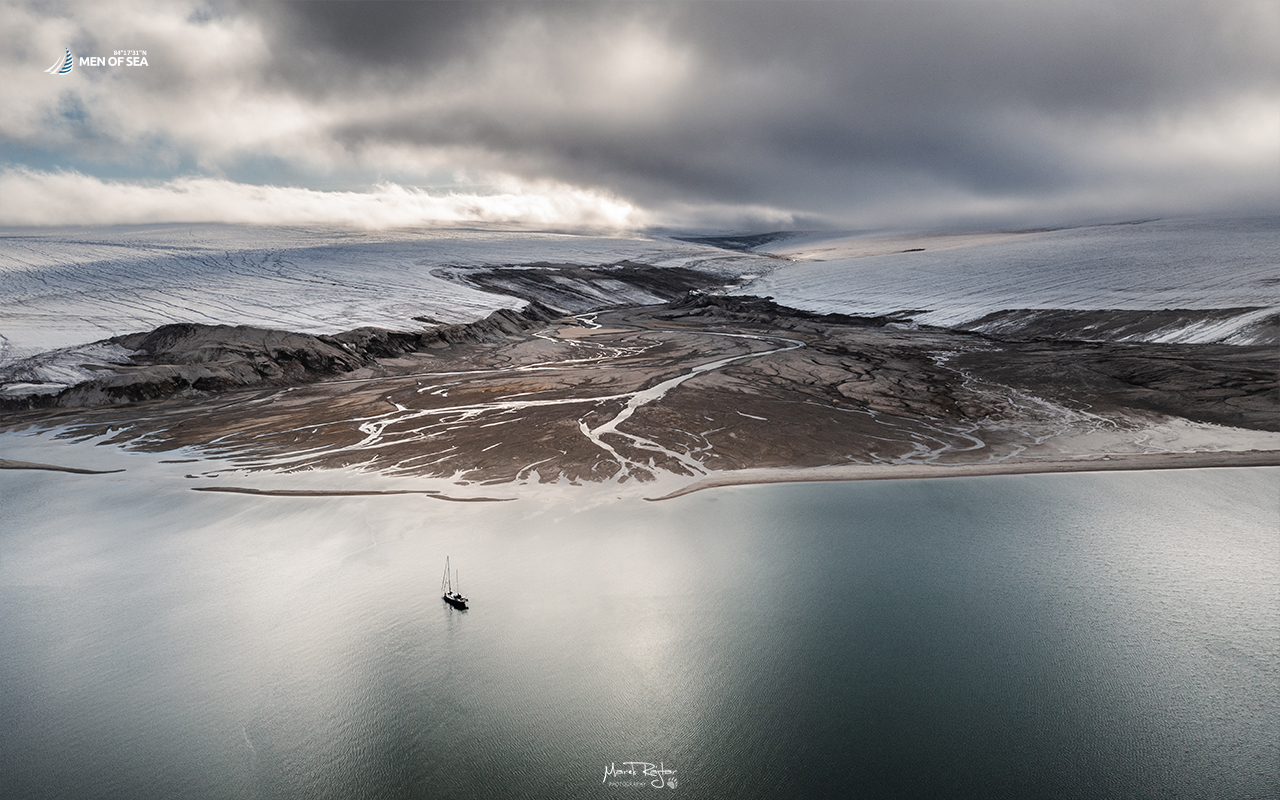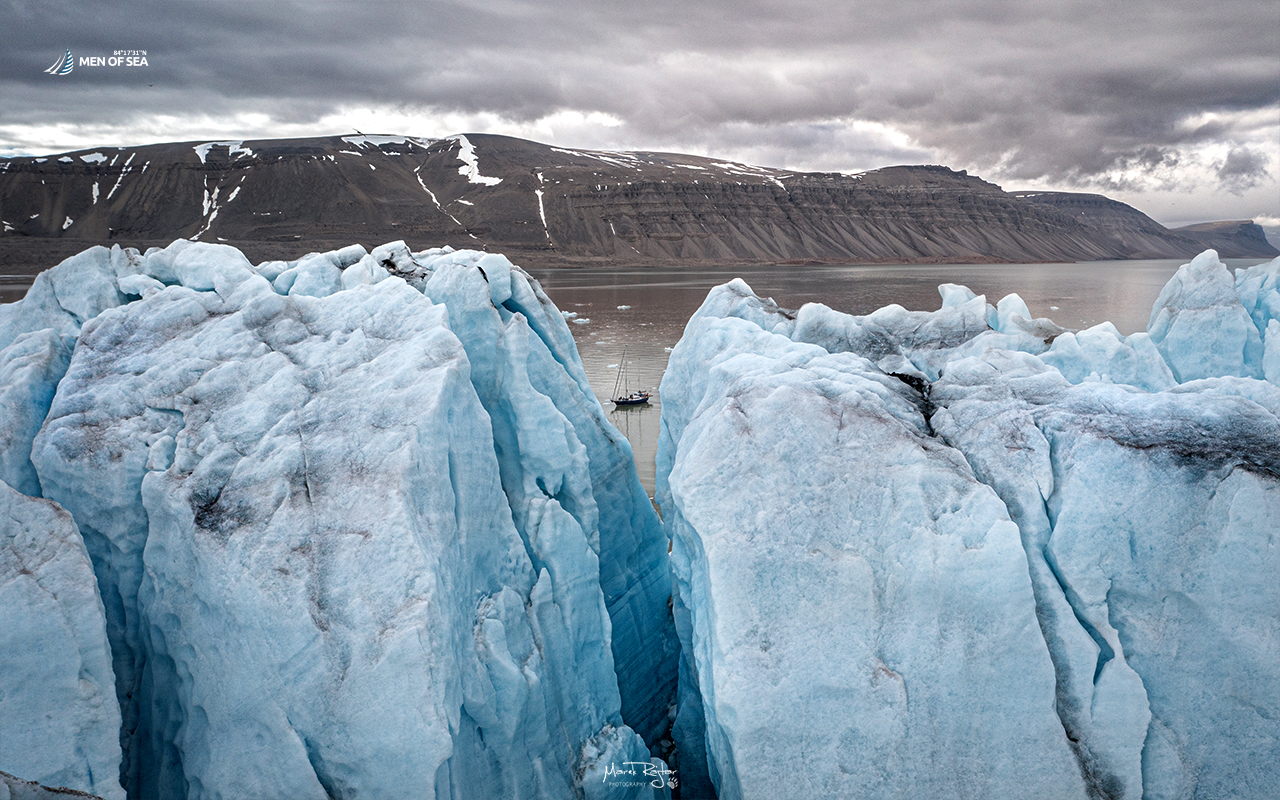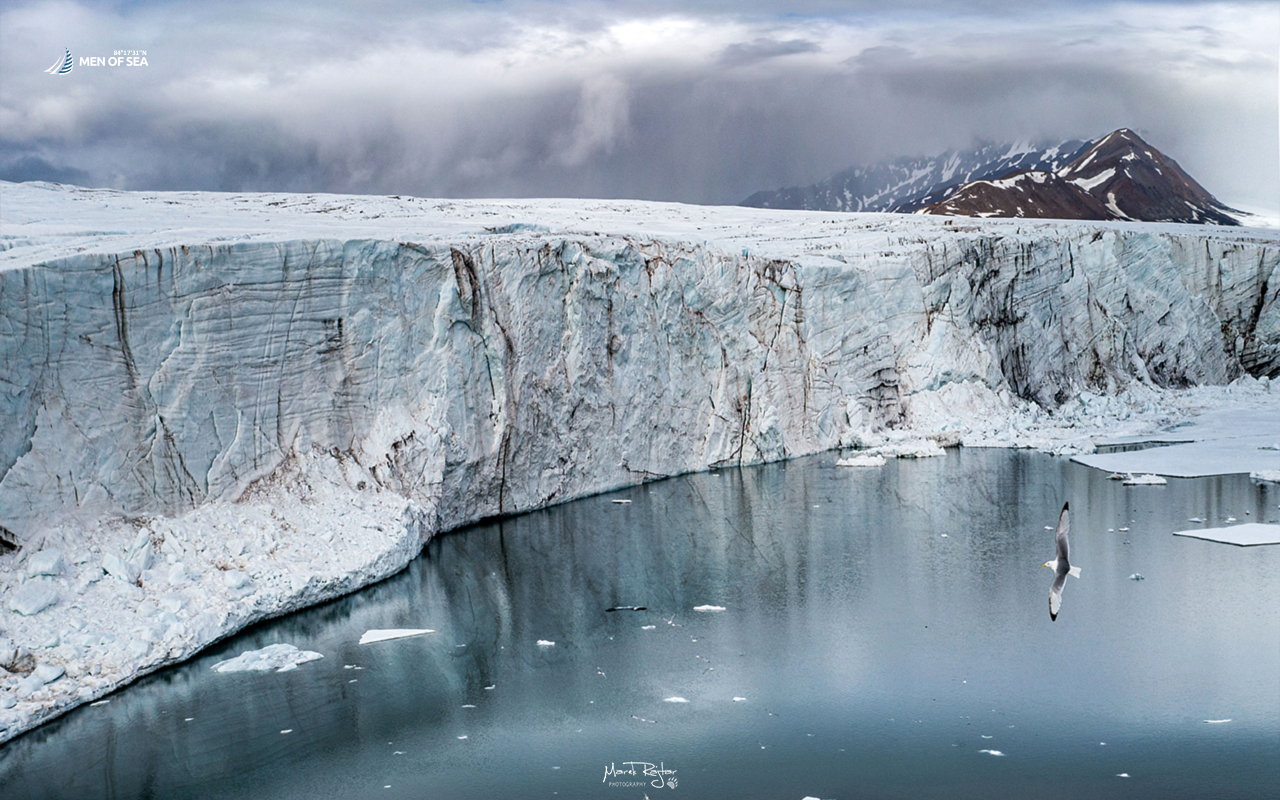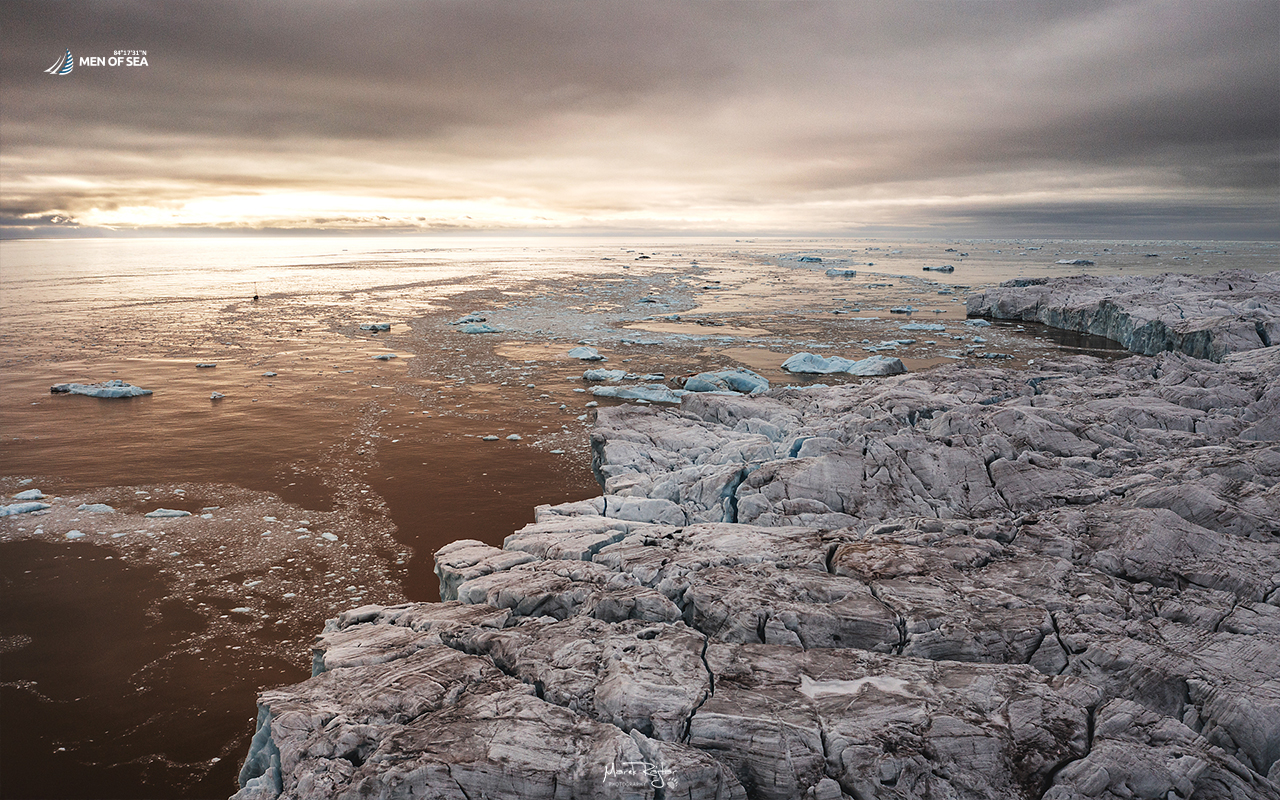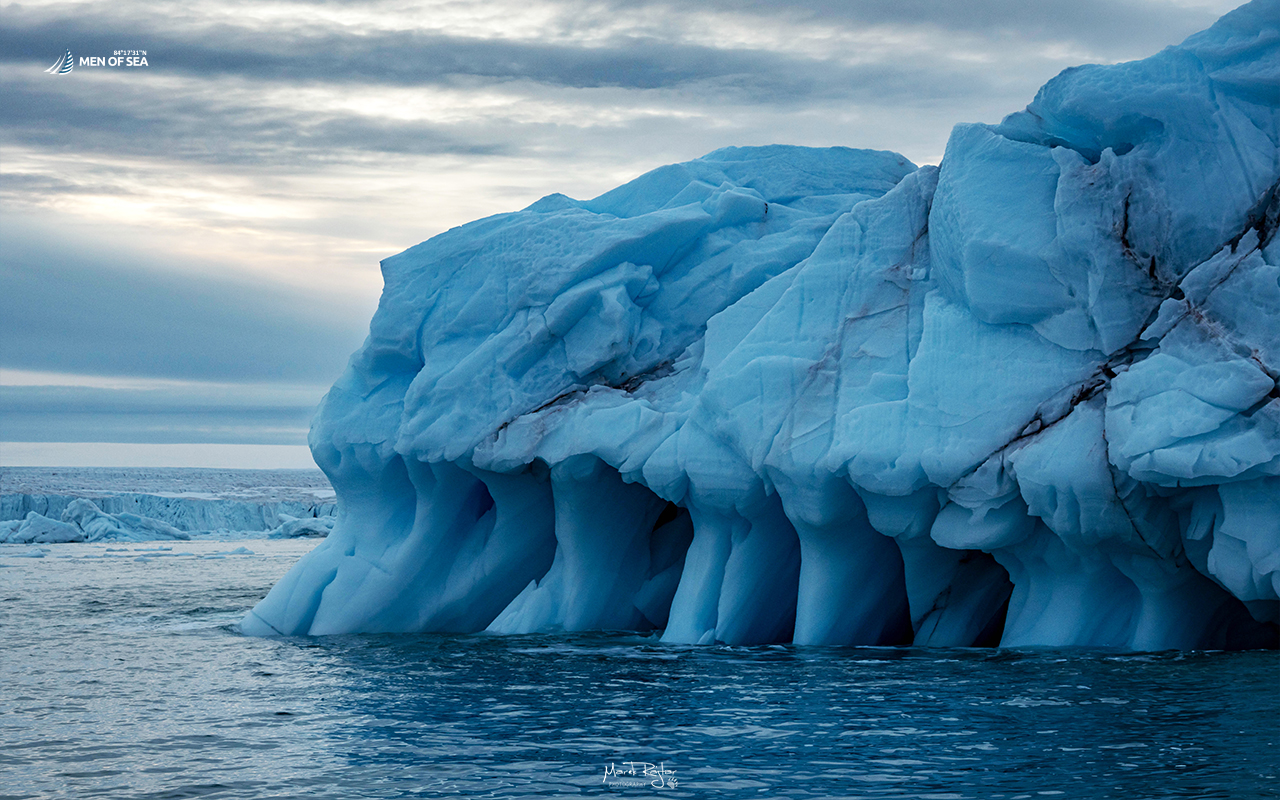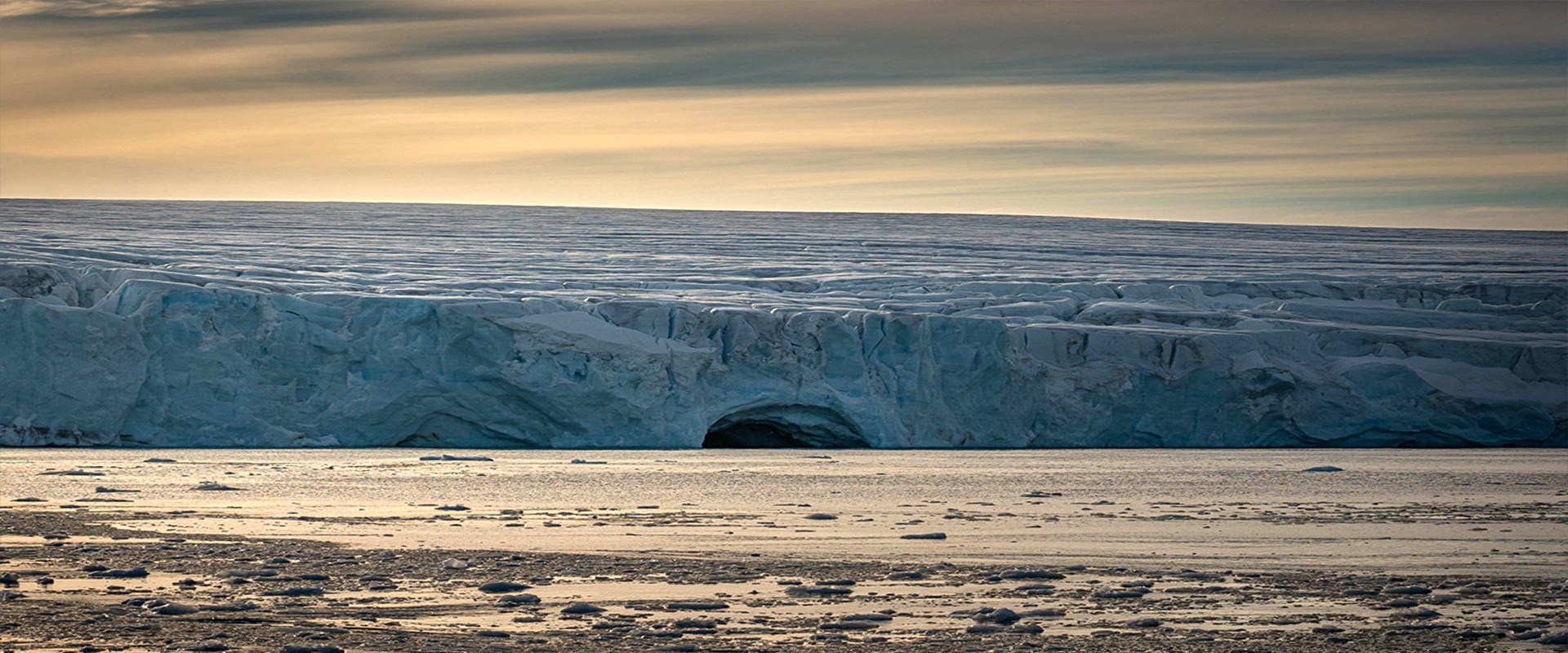
GLACIERS
Raw, captivating beauty of nature
BASIC INFORMATION
Glaciers cover about 60% of the surface of Svalbard. There are over 2100 of them. The largest ones are located on the islands of Nordaustlandet, Edgeøya, and Barentsøya, but on Spitsbergen, almost every fjord leads to a glacier front. Glaciers are highly dynamic and regenerate each year. The regeneration of glaciers depends on a large amount of snowfall in the cold season, which isn’t entirely melted during the warm season. Snow transforms into ice grains due to melting and refreezing. This process forms firn. The pressure from the upper layers of firn, along with repeated melting and refreezing processes, binds the firn grains into white ice. Under increasing pressure and over time, white ice transforms into blue ice.
The significance of glaciers cannot be overstated. They are incredibly important in shaping the functioning of terrestrial and marine ecosystems. They create the cryosphere, which is crucial in Earth’s heat balance. Glaciers also provide habitat for unique species of microscopic plants and animals, and they serve as the largest reservoirs of fresh water.
Several types of glaciers are found on Svalbard
The largest ones are called ice caps (ice sheets) and cover vast areas of land, forming thick domes descending radially in all directions. They are located in the eastern and northeastern parts of the archipelago. Among the largest ones are Austfonna and Vestfonna. In our opinion they are the most beautiful and spectacular glaciers in Europe.
Outlet glaciers are streams of ice draining ice caps, ice fields, or other large glaciers. They often take the form of tongues and may be connected to primary glaciers, but they are treated separately because they have different behaviour and dynamics compared to neighbouring glaciers.
Valley glaciers are the most typical and commonly encountered types of glaciers. They fill valleys of mountain ranges and have the most favourable conditions for survival and regeneration.
Shelf glaciers form when large masses of ice flowing into the sea or ocean float on their surface and create ice platforms with water underneath. Shelf glaciers form the largest icebergs as they can detach massive ice blocks.
Additionally, mountain glaciers, cirque glaciers, and debris glaciers are found here.
Glaciers – That’s What Tiggers Like Best
Glaciers are the main reason why we venture into polar regions. Their beauty, majesty, pristine, and raw nature is a magnet that has drawn us year after year for many years now.
The sight of gigantic glaciers, their high fronts reaching tens of meters (even up to 100), and the dynamic processes occurring around them are the most spectacular views nature can offer. During our trips, we strive to get as close to glaciers as possible. We approach them by yacht and often witness “calving,” the moment when large ice blocks break off from the glacier front and fall into the water, causing waves. We also organize treks to glaciers, getting really close to them, and if conditions allow, we even climb some of them. Often, we have the opportunity to taste ice, which we retrieve from the water and place in a glass.
Can ice really be blue? Yes. Thanks to the fact that glacier ice is very dense, it absorbs red and yellow light but reflects blue, giving the impression of having a blue colour. Older parts of glaciers have even greater density, making them appear darker.
Trips connected with GLACIERS
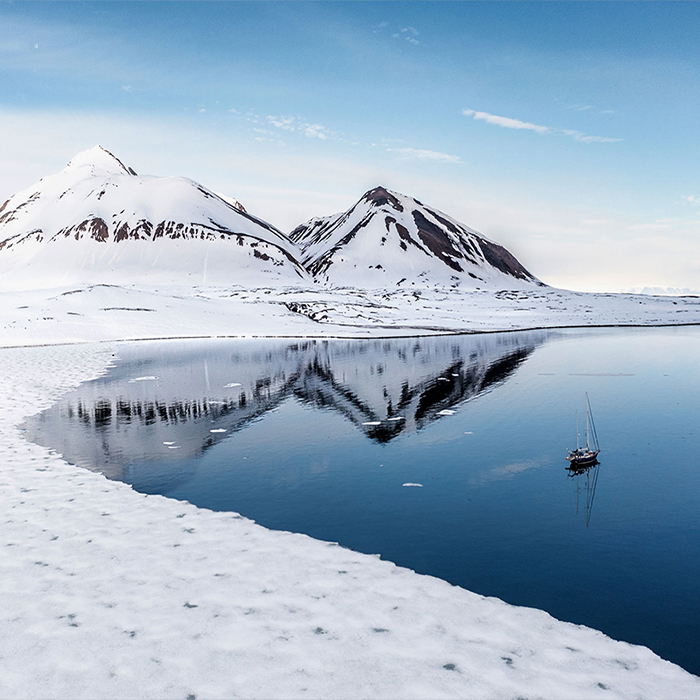
Across the Arctic Seas

12 dni
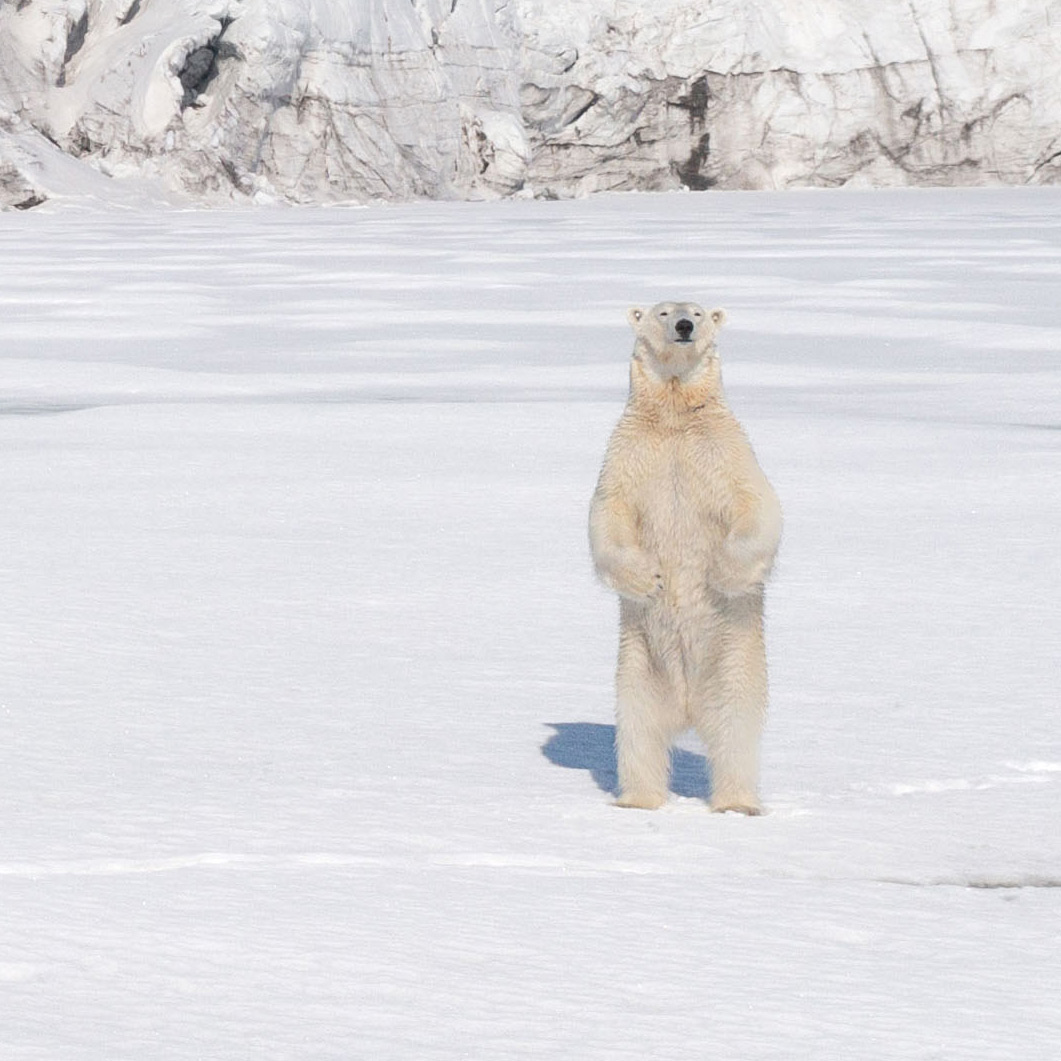
Animals of Svalbard Photo Safari #1

8 dni

Animals of Svalbard Photo Safari #2

8 dni

Animals of Svalbard Photo Safari #3

8 dni
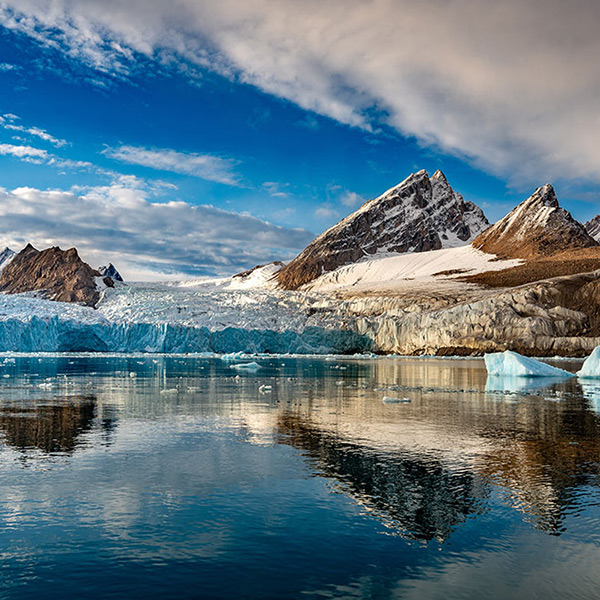
Spitsbergen in a week #5

8 dni
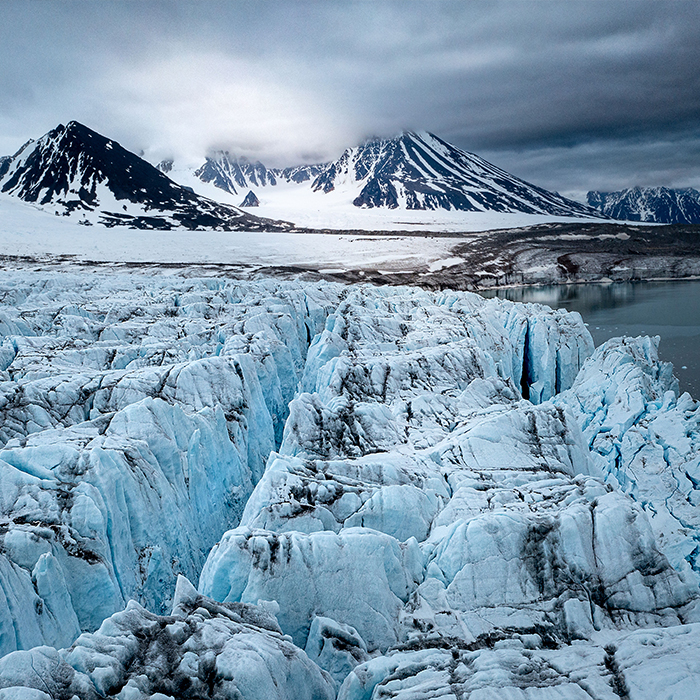
To the Edge of the North #1

10 dni

To the Edge of the North #2

10 dni

Spitsbergen in a week #6

8 dni

To the Edge of the North #4

10 dni

Spitsbergen in a week #8

8 dni
